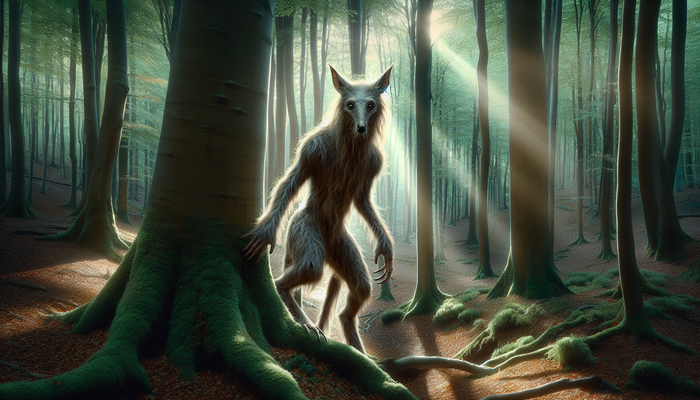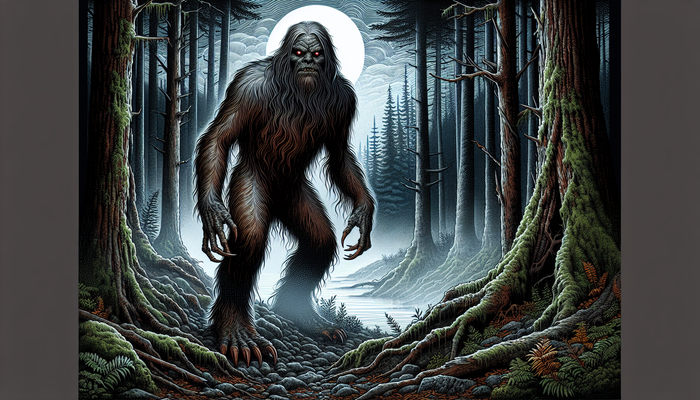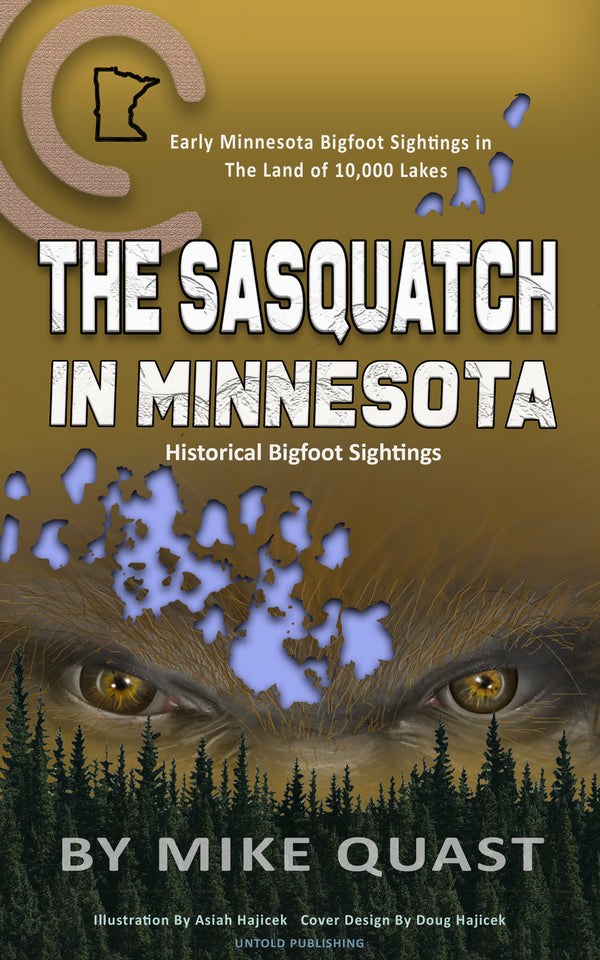Exploring Bigfoot Migration Patterns: Insights and Theories

By Anthony Romano, Cryptozoologist
Understanding Bigfoot: More Than Just a Hairy Giant
Before we can dive into migration patterns, it's crucial to understand what we're dealing with. Bigfoot is typically described as a large, bipedal creature covered in dark hair, standing anywhere from 6 to 15 feet tall. Witnesses often report a powerful, musky odor accompanying sightings – leading some to dub it the "Skunk Ape" in certain regions.
The origins of the Bigfoot legend are as diverse as the creature's reported appearances. Native American folklore is rich with tales of wild men and forest giants, each with their own unique characteristics. The Lummi people of the Pacific Northwest, for instance, speak of the Ts'emekwes, while the Sts'ailes people tell stories of the Sasq'ets – a name that likely gave rise to the term "Sasquatch."
These indigenous narratives aren't just quaint stories; they're valuable sources of information that have shaped our modern understanding of Bigfoot. They often describe behaviors, habitats, and even migration patterns that align surprisingly well with contemporary sightings and theories.
The Geography of Bigfoot: Where the Wild Things Roam
If you're hoping to catch a glimpse of Bigfoot, you might want to head to the Pacific Northwest. Washington, Oregon, and Northern California have long been considered the epicenter of Bigfoot activity. But don't discount other regions – the Ohio River Valley and central Florida have also become hotspots for sightings in recent years.
Joshua Stevens, a data scientist, mapped over 3,300 reported Bigfoot sightings from 1921 to 2013. His findings revealed fascinating patterns. Sightings weren't just random dots on a map; they clustered in specific areas, often in regions with low human population density and dense forest cover.
These clusters paint a picture of Bigfoot's preferred habitat: remote, wooded areas with access to water sources and ample food. It's no coincidence that these are also ideal environments for a variety of wildlife, including bears – a fact that skeptics often point to when debunking Bigfoot sightings.
But the geographic distribution of sightings isn't static. Over time, researchers have noticed shifts in where Bigfoot is most frequently reported. These changes have led to one of the most compelling theories in Bigfoot research: seasonal migration.
Seasonal Shifts: The Bigfoot Migration Hypothesis
Imagine Bigfoot as a snowbird, heading south for the winter and north for the summer. That's essentially the core of the seasonal migration theory. According to this hypothesis, Bigfoot spends the colder months in warmer southern climates – think Florida, Texas, and Southern California. As spring arrives, they begin a northward journey, reaching states like Washington, Oregon, and Michigan by summer.
This theory isn't just wild speculation. It's based on patterns observed in reported sightings over many years. Researchers have noted that sightings in southern states tend to peak during winter months, while northern sightings increase in summer. The timing of these movements is thought to occur around March to April for the northward journey and September to October for the return south.
But why would Bigfoot migrate? The answer likely lies in the same factors that drive other animal migrations: food availability and climate. As seasons change, so do food sources. Berries ripen at different times in different regions, and prey animals have their own migration patterns. By following these food sources, Bigfoot could ensure a year-round supply of sustenance.
Climate plays a crucial role too. The harsh winters of the northern forests might be too challenging even for a creature as robust as Bigfoot. Moving south could provide more comfortable living conditions and easier access to food during the coldest months.
Footprints in the Snow (and Mud): Evidence of Movement
One of the most compelling pieces of evidence for Bigfoot migration comes from footprint analysis. Over the years, researchers have collected and studied hundreds of alleged Bigfoot footprints. These aren't just random impressions in the mud; many show intricate details that experts claim would be difficult to fake.
The size of these prints is staggering. Many measure between 15 and 18 inches in length, with some reports claiming prints up to 24 inches long. For comparison, the average human male foot is about 10.5 inches long. These massive prints often show a distinct midtarsal break – a flexibility in the middle of the foot that's seen in primates but not in humans.
But it's not just the size and shape of individual prints that's interesting. It's the patterns they form. Researchers have reported finding trails of these enormous footprints that stretch for miles through remote wilderness areas. These trails often follow logical routes through the terrain, avoiding obstacles and seeking out easy paths – just as you'd expect from an intelligent creature familiar with its environment.
What's particularly intriguing is how these footprint findings align with the seasonal migration theory. Researchers have noted that the frequency and location of footprint discoveries seem to shift with the seasons, matching the proposed north-south movement pattern.
The Sound of Sasquatch: Vocalizations and Communication
Footprints aren't the only signs of Bigfoot's presence. Many witnesses report hearing strange vocalizations that they attribute to the creature. These sounds range from low, guttural growls to high-pitched screams that echo through the forest.
Some researchers believe these vocalizations play a crucial role in Bigfoot's migratory behavior. They theorize that Bigfoot uses these calls to communicate over long distances, possibly to coordinate group movements or to alert others to good foraging areas.
One of the most famous audio recordings associated with Bigfoot is the "Sierra Sounds," captured in the 1970s in the Sierra Nevada mountains. These recordings feature a series of grunts, howls, and what sounds like speech-like vocalizations. While skeptics argue that the sounds could be attributed to known animals or clever hoaxes, believers point to analysis by linguists and audio experts who claim the vocalizations show complexity beyond animal calls.
If these vocalizations are indeed from Bigfoot, they could provide valuable insights into the creatures' social structure and migratory habits. Do they travel in family groups? Do they have a complex language? These are questions that continue to fascinate researchers and fuel ongoing investigations.
Foraging Behavior: You Are What (and Where) You Eat
Understanding Bigfoot's diet is crucial to unraveling its migration patterns. Based on eyewitness accounts and analysis of areas where Bigfoot activity is reported, researchers believe these creatures are omnivorous. Their diet likely includes a mix of plant matter – berries, nuts, and roots – as well as meat from small animals and possibly even larger prey.
This diverse diet would allow Bigfoot to adapt to various environments, which is essential for a migratory species. As they move from region to region, they would need to be able to take advantage of whatever food sources are available.
Interestingly, some researchers have noted correlations between Bigfoot sightings and the ripening of certain berry species. In the Pacific Northwest, for example, there seems to be an uptick in Bigfoot activity during the late summer and early fall, coinciding with the peak of the berry season in the region's forests.
There have also been reports of Bigfoot raiding orchards, vegetable gardens, and even livestock. While these accounts are often dismissed as the work of more mundane animals like bears, some researchers argue that the patterns of these raids – including the timing and the specific items taken – are more consistent with an intelligent, omnivorous primate than with known local wildlife.
The Cultural Context: More Than Just a Creature
The study of Bigfoot migration isn't just about tracking a mysterious animal. It's deeply intertwined with cultural beliefs, particularly those of indigenous peoples. Many Native American tribes have long-standing traditions of forest-dwelling giants, and these stories often include details about the creatures' movements and behaviors.
For example, the Lakota people speak of the Chiye-tanka, or "Big Elder Brother," a large, hairy humanoid that was said to follow the bison herds. This aligns interestingly with modern theories about Bigfoot following food sources. Similarly, stories from various tribes along the Pacific coast describe hairy giants moving between the mountains and the coast with the changing seasons – a pattern that matches current migration theories.
These cultural narratives provide more than just colorful backstory. They offer valuable insights into potential long-term patterns of Bigfoot behavior and movement. If these creatures do exist, they've likely been interacting with human populations for thousands of years. The stories passed down through generations could contain kernels of truth about their habits and migrations.
Moreover, these cultural beliefs influence how people interpret their experiences in the wilderness. Someone raised on stories of forest giants might be more likely to interpret an unusual sound or glimpse of movement as a Bigfoot encounter. This doesn't necessarily invalidate their experience, but it does add an interesting layer of complexity to the study of Bigfoot sightings and migration patterns.
Science Meets Sasquatch: The Skeptic's Perspective
No exploration of Bigfoot migration would be complete without addressing the elephant – or rather, the ape – in the room: scientific skepticism. The mainstream scientific community largely dismisses the existence of Bigfoot, citing the lack of concrete physical evidence such as bodies or fossils.
Critics argue that if a breeding population of large primates existed in North America, we would have found irrefutable proof by now. They point out that even rare and elusive known species leave behind physical evidence – hair, scat, or remains – that can be studied and verified.
Moreover, some scientists have used ecological niche modeling to analyze the plausibility of Bigfoot's existence. These studies often conclude that the environmental parameters associated with Bigfoot sightings align closely with those of known animals, particularly black bears. This suggests that many Bigfoot sightings might be misidentified encounters with bears or other wildlife.
However, proponents of Bigfoot research argue that absence of evidence is not evidence of absence. They point to the discovery of new large animal species in recent history, such as the saola (a large forest-dwelling bovine discovered in Vietnam in 1992) as proof that unknown large mammals can evade scientific detection.
The debate over Bigfoot's existence continues to rage, but it hasn't stopped researchers from developing and testing theories about the creature's potential migration patterns. In fact, the application of scientific methods to Bigfoot research has led to some intriguing findings and hypotheses.
Unique Insights: Beyond Simple Migration
As researchers dig deeper into the Bigfoot phenomenon, they're uncovering patterns and behaviors that go beyond simple north-south migration. Here are some of the most intriguing theories and observations:
- Migration Corridors: Some researchers propose that Bigfoot doesn't just move randomly across the landscape. Instead, they may use specific routes or corridors for their seasonal movements. These corridors often follow natural features like river valleys or mountain ranges, providing cover and access to resources along the way.
- Altitude Shifts: In mountainous regions, some theorize that Bigfoot's migration might be more vertical than horizontal. They may move to higher elevations in summer to take advantage of alpine meadows and their abundant plant life, then descend to lower, more sheltered areas in winter.
- Population Dynamics: The idea of Bigfoot migration raises questions about population structure. Do they move in family groups? Are there resident populations that stay in one area year-round, with only some individuals migrating? These questions have led to fascinating speculation about Bigfoot social structures and breeding habits.
- Adaptive Behaviors: Some researchers suggest that Bigfoot may be highly adaptable, capable of adjusting its migratory patterns in response to environmental changes or human encroachment. This could explain why sighting patterns have shifted over time in some areas.
- Interspecies Interactions: There's growing interest in how Bigfoot might interact with other wildlife during its migrations. Some theorize that they may follow or avoid certain species, which could influence their movement patterns.
These theories showcase the complexity of Bigfoot research. It's not just about proving or disproving the creature's existence; it's about understanding how such a being might fit into the broader ecosystem and how it might have evolved alongside other North American wildlife.
The Human Element: Why Bigfoot Fascinates Us
The study of Bigfoot migration patterns isn't just about tracking a mysterious creature. It's a lens through which we examine our relationship with the natural world and the unknown. The idea that a large, undiscovered primate could be living in our forests, following ancient migratory routes, speaks to a deep-seated human desire for mystery and discovery.
This fascination has real-world impacts. Bigfoot tourism is a growing industry, with enthusiasts planning trips around supposed migration routes or sighting hotspots. This influx of visitors can bring economic benefits to rural areas, but it also raises questions about the impact on local ecosystems and wildlife.
Moreover, the study of Bigfoot migration often leads researchers to explore remote, understudied areas. Even if they don't find evidence of Sasquatch, these expeditions can yield valuable data about local flora and fauna, contributing to our understanding of North American ecosystems.
The Future of Bigfoot Migration Research
As technology advances, so do the methods for studying Bigfoot migration. Researchers are increasingly using tools like thermal imaging cameras, environmental DNA analysis, and satellite tracking to search for evidence of these elusive creatures.
Some projects are taking a citizen science approach, encouraging hikers and outdoor enthusiasts to report sightings or strange occurrences through mobile apps. This crowdsourced data could potentially provide a more comprehensive picture of Bigfoot activity and movement patterns.
There's also growing interest in interdisciplinary approaches to Bigfoot research. Anthropologists, biologists, and data scientists are collaborating to analyze sighting reports, environmental factors, and cultural narratives in new ways. This holistic approach could yield fresh insights into the Bigfoot phenomenon and its potential migration patterns.
Whether Bigfoot exists or not, the study of its supposed migration patterns offers a fascinating glimpse into the intersection of folklore, science, and human psychology. It challenges us to question what we know about the natural world and to consider the possibilities that might lie just beyond the edge of the known.
As we continue to explore the wilderness of North America, we're not just searching for a mythical creature. We're exploring the limits of our knowledge, the power of belief, and the enduring mystery of the natural world. In the end, the study of Bigfoot migration is as much about us as it is about the creature itself – our fears, our hopes, and our endless capacity for wonder.
From Bigfoot to UFOs: Hangar 1 Publishing Has You Covered!
Explore Untold Stories: Venture into the world of UFOs, cryptids, Bigfoot, and beyond. Every story is a journey into the extraordinary.
Immersive Book Technology: Experience real videos, sights, and sounds within our books. Its not just reading; its an adventure.



























